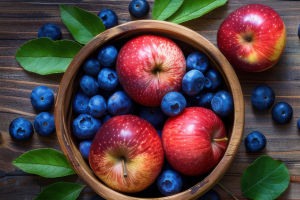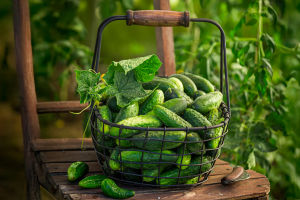Fruit in Savory Dishes?
When was the last time you tossed a slice of mango into a curry or grilled pineapple on top of your roasted veggies? Most people keep fruits in their smoothie bowls or desserts—but they're missing out on something amazing.
Used wisely, fruit can brighten, balance, and even transform savory dishes. The key isn't just to add sweetness—it's about playing with contrast, acidity, and texture to build depth of flavor.
This article isn't just about the "idea" of mixing fruit into meals—it's about how to actually do it, with techniques and pairings that are surprisingly easy, yet sophisticated. Let's explore five creative ways to make fruit a serious player in your main course.
1. Grilled Pineapple with Spicy Proteins
Pineapple isn't just juicy—it's naturally high in bromelain, an enzyme that helps break down proteins, especially in marinades. That makes it an excellent partner for grilled meats and plant-based alternatives like tofu or tempeh.
Why it works: The char from the grill caramelizes the pineapple's sugars, while its acidity cuts through oil and spice. This brings balance to bold, savory flavors.
How to use it:
• Marinate chicken or tofu in a mix of pineapple juice, lime, and chili flakes
• Skewer pineapple chunks between spicy shrimp on the grill
• Serve grilled pineapple rings on spicy pulled jackfruit sliders for a tropical twist
2. Mango in Curry or Stir-fry
Mango might seem too soft for cooking, but firm, underripe mangoes are excellent in hot dishes. Their slightly sour note mimics tamarind or vinegar while offering a mild fruitiness.
Why it works: The starchier texture of green mango holds up well in heat, and its tartness brings life to heavier sauces.
How to use it:
• Stir chopped green mango into a coconut curry with chickpeas or lentils
• Toss julienned mango into a quick stir-fry with garlic, chili, and greens
• Add thin mango strips to rice paper rolls with herbs and grilled tofu
3. Strawberries in Salads with Herbs or Cheese
Yes, strawberries are sweet—but paired with the right ingredients, they become surprisingly savory-friendly. Their acidity plays well with aged cheese, herbs, and even balsamic vinegar.
Why it works: The contrast of sweet berries and salty or bitter elements makes for a layered flavor experience that's both refreshing and satisfying.
How to use it:
• Slice strawberries into arugula salads with goat cheese and crushed pistachios
• Roast strawberries with rosemary and serve over soft ricotta
• Mix with tomatoes and basil for a fruit-forward Caprese remix
4. Figs or Grapes with Roasted Vegetables
Roasted carrots, squash, or Brussels sprouts get a whole new dimension with sweet fruit like figs or grapes. These fruits don't just add sugar—they caramelize, intensifying their flavor and adding a chewy or juicy pop.
Why it works: The sugars in grapes and figs become richer when roasted, and they pair beautifully with earthy, slightly bitter veggies.
How to use it:
• Roast halved grapes with Brussels sprouts and red onion
• Add sliced figs to a sheet pan with sweet potatoes and rosemary
• Use grape halves in a warm farro salad with roasted beets and walnuts
5. Citrus Segments in Grain Bowls
Grapefruit, orange, or blood orange slices are not just for breakfast—they can cut through grain-heavy dishes and bring a punch of acidity that lightens every bite.
Why it works: The citrus segments offer both juice and texture, which is ideal when dealing with heavier ingredients like quinoa, brown rice, or bulgur.
How to use it:
• Toss grapefruit segments into a quinoa bowl with avocado and roasted chickpeas
• Mix blood orange slices into a farro bowl with kale and sunflower seeds
• Use orange zest in the dressing to tie the citrus note into the whole dish
Tips for Balancing Fruit in Savory Cooking
Using fruit in savory dishes isn't just about adding sweetness—it's about balancing five tastes: sweet, salty, sour, bitter, and umami. Here's how to make it work:
1. Use fruit as a highlight, not the base – Small portions go a long way
2. Think about texture – Crisp, juicy fruits work best with creamy or roasted ingredients
3. Balance with salt or acid – A sprinkle of sea salt or vinegar can stop the fruit from tasting out of place
4. Don't overcook the fruit – Unless you're roasting it intentionally, keep fruit close to raw or just warmed
5. Pair with herbs – Mint, basil, rosemary, and cilantro can bridge the flavor gap beautifully
Want to Try It Tonight?
The next time you cook dinner, take a quick look at your fruit bowl. Is there a ripe mango? A half-used orange? Some lonely grapes? Think of them not as snacks—but as secret ingredients. Whether you're roasting, grilling, or just tossing a salad, a touch of fruit can elevate your dish from ordinary to unforgettable.
Have you ever added fruit to a savory meal and been surprised by how good it was? Or maybe you've tasted a weird-sounding combo that actually worked? Share your experience or try one of the ideas above—and see how fruit can totally change the way you cook.
-
 Morning Fruit BoostWant to Start Your Day Right? These 5 Fruits Are Perfect to Eat on an Empty Stomach in the Morning!
Morning Fruit BoostWant to Start Your Day Right? These 5 Fruits Are Perfect to Eat on an Empty Stomach in the Morning! -
 Cool FruitFeeling drained in the summer heat? These 5 high-water fruits naturally hydrate your body fast!
Cool FruitFeeling drained in the summer heat? These 5 high-water fruits naturally hydrate your body fast! -
 Fresh Carrot DelightDiscover the Trendy Korean French Carrot Salad that Everyone's Talking About – It's So Easy to Make and So Delicious!
Fresh Carrot DelightDiscover the Trendy Korean French Carrot Salad that Everyone's Talking About – It's So Easy to Make and So Delicious!
Copyright © zogu 2021 - 2025. All Right Reserved.